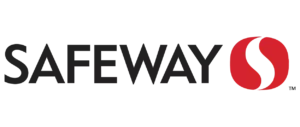When designing social media platforms, it’s a hard line to define between freedom of speech and blatant harassment. As each company outlines their own policies and business conduct agreements, it can seem impossible to navigate ethics online. An unfortunate 40% of online users have experienced harassment online.
On a platform of hidden identities and communication, the temptation to act unethically proves to be too much for a large amount of the American population. There is no question that this reality is hazardous to many personal lives, never to mention professional accounts. Social media companies have taken notice of this issue.
For instance, Instagram has given users the ability to report posts for a plethora of reasons, from “I find this post offensive” to “This post is inappropriate”.
What do these moves mean for companies and their encounters with harassments through social media?
But first,
What is considered a form of social media harassment?
Social media harassment, according to Online Harassment Field Manuel, refers to many antagonistic actions exhibited by social media users. Another common word is cyberbullying; however, it goes much deeper than preteens on Instagram, or other social media site. It can also happen to adults and companies and have significant effects if not treated properly.
The problem with social media abuse is that it causes a distance between the subject and abuse. People are much less likely to insult, but feel emboldened when they have a computer to separate themselves from their victims.
Businesses are especially susceptible to social media abuse because businesses need to be on these channels to communicate with consumers and partners. However, unlike an individual, it poses problems for a brand to disappear from Twitter if an irate user launches a company attack. Removal from social media will lead to business loss. In this day and age, business owners must learn the best tactics to manage social media attacks.
What are the different types of online harassment
Online harassment can differ between individuals and cases. Knowing the right words for online harassment will help deter or react appropriately to any harassment you can encounter. We break down and summarize each form to give you a better understanding of what they are.
- Cyberstalking is using the Internet to routinely and consistently stalk, threaten or intimidate others.
- Online Impersonation is when a person uses someone’s name or person without permission to hurt, defraud, intimidate or threaten.
- Catfishing is an internet fraud where someone develops a fake online identity for a relationship.
- Doxxing is when someone’s personal information is released online to threaten others.
- Swatting is an online stalking and doxxing operation. If personal information like address is issued, a call can be made to law enforcement that outlines a fake dangerous scenario occurring at the location of the target.
- Trolling/Dogpiling is the act of someone making random or contentious remarks in an online group to evoke emotion.
- Revenge Porn or nonconsensual pornography means sharing private, explicit sexual images or videos without the consent of the user.
Tips on how to deal with social media harassment
Online harassment is an especially tough type of bullying to navigate since you don’t deal directly with the victim, and it must be treated in a more complex fashion than an in-person conflict.
Here are a few tips to help your business avoid the pitfalls of social media.
- Don’t engage in the harassment.
- Neutralize a situation with positivity.
- Blocking
- Express & Extinguish
- Report the situation.
Here we will break down each social media platform’s risk, tools, and solutions to resolving these instances. It is through the knowledge of these assets that will equip and empower your company to professional and successful business moves.
1. Facebook
Released in March 2015, Facebook introduced a new code of conduct for its users. These policies and tips were released in order to protect its user and prevent harassment, bulling, and attacks. Facebook’s website states the official policies, “Facebook offers these tools to help you deal with bullying and harassment. Depending on the seriousness of the situation:
Unfriend the person. Only your Facebook friends can contact you through Facebook chat or post on your Timeline.
Block the person. This will prevent the person from adding you as a friend and viewing things you share on your Timeline.
Report the person or any abusive things they post.
The best protection against bullying is to learn how to recognize it and how to stop it. Here are some tips:
Don’t retaliate. Most bullies are looking for a reaction, so don’t give them one.
Don’t keep it a secret. Reach out to someone you trust, like a close friend, family member, counselor or teacher, who can give you the help and support you need.
Document and save. If someone has posted something you don’t like, you can print or take a screenshot of it in case you need to share it with someone you trust later.”
What does this mean for businesses?
Let’s look at these policies with the lens of a company. Say there is a consumer harassing your business’ social media. Companies are able to ignore a few rude remarks made sporadically on various social media platforms, but if there is a consumer drawing mass attention online or making false, rude, or degrading claims regarding your business, action should be taken.
Many companies have opted to respond respectfully to the harasser, correcting them politely and offering refunds if they found your company’s service unsatisfactory. If the consumer will not be reasoned with, then perhaps it is time to consider reporting or blocking the user.
2. Instagram
Instagram’s policies are predictably different than Facebook’s. As Instagram’s content is photos, differing from Facebook’s emphasis on content, there are fewer opportunities from harassers to gain attention or a significant following.
The official Instagram policies of reportable activity are as follows:
1. Nudity. Images of nudity and of an explicitly sexual nature are prohibited. However, Instagram makes an exception for “photos of post‑mastectomy scarring and women actively breastfeeding.”
2. Illegal activity. Offering sexual services, buying or selling drugs (as well as promoting recreational use) is prohibited. There is a zero-tolerance policy for sexual images of minors and revenge porn (including threats of posting revenge porn).
Offering sexual services, buying or selling drugs (as well as promoting recreational use) is prohibited. There is a zero-tolerance policy for sexual images of minors and revenge porn (including threats of posting revenge porn).
3. Harassment.
“We remove content that contains credible threats or hate speech, content that targets private individuals to degrade or shame them, personal information meant to blackmail or harass someone, and repeated unwanted messages…We carefully review reports of threats and consider many things when determining whether a threat is credible.” Essentially, if any user is posting any of this inappropriate content and aiming it explicitly towards your company, it would be more appropriate to report the user, then initiate a conversation with them.
4. Twitter
Twitter has experienced several incidents of harassment in the site’s history. This has refined their harassment policies into one of the most specific and lengthy ones out there. It leaves no room for interpretation or loopholes, sections relevant to business accounts are as follows,
“We believe in freedom of expression and in speaking truth to power, but that means little as an underlying philosophy if voices are silenced because people are afraid to speak up. In order to ensure that people feel safe expressing diverse opinions and beliefs, we do not tolerate behavior that crosses the line into abuse, including behavior that harasses, intimidates, or uses fear to silence another user’s voice….
Harassment: You may not incite or engage in the targeted abuse or harassment of others. Some of the factors that we may consider when evaluating abusive behavior include:
- if a primary purpose of the reported account is to harass or send abusive messages to others;
- if the reported behavior is one-sided or includes threats;
- if the reported account is inciting others to harass another account; and
- if the reported account is sending harassing messages to an account from multiple accounts.
” Essentially, if another account or user is giving your company’s account a hard time, the team at Twitter is more than equipped to handle the situation. Report the harasser, and let the Twitter team handle the rest.
Understanding where the line is drawn during in-person interactions is a fairly easy call. However, it can be hard to navigate that very same line through technological devices. With constantly evolving platforms, the “rules” and customs of the internet can seem blurred.




















